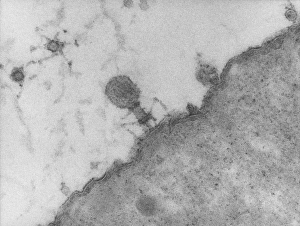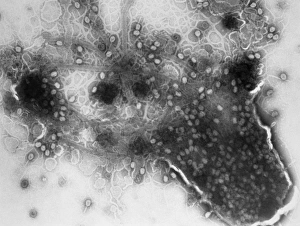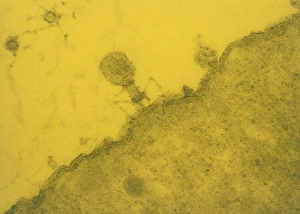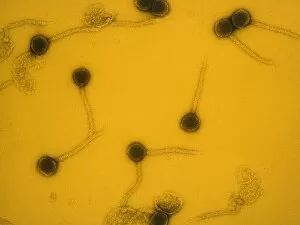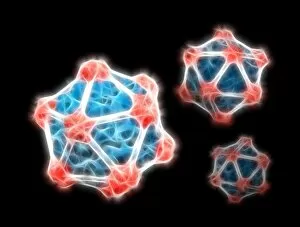Bacteriophages Collection
Bacteriophages, also known as phages, are fascinating microscopic organisms that have the ability to infect and destroy bacteria
All Professionally Made to Order for Quick Shipping
Bacteriophages, also known as phages, are fascinating microscopic organisms that have the ability to infect and destroy bacteria. These tiny warriors play a crucial role in maintaining the balance of our ecosystem by keeping bacterial populations in check. Incredible images captured through Transmission Electron Microscopy (TEM) reveal the intricate structure of bacteriophages. The TEM of Lambda bacteriophages showcases their elongated shape and tail-like appendage, while artwork beautifully depicts these phages in action. Witnessing the attack on bacteria is truly awe-inspiring. TEM images like C016 / 9434 and C016 / 9433 capture this intense battle, where phages latch onto bacterial cells and inject their genetic material to take control. It's a constant struggle for survival at the microscopic level. One well-known type of bacteriophage is T4, which has been extensively studied due to its unique features. Artwork such as C016 / 8974 and C016 / 8973 portrays T4 with its complex head structure and long tail fibers used for attachment to host bacteria. The power lies in their cell-puncturing devices. Images showcasing the T4 bacteriophage's puncturing device highlight how it pierces through bacterial cell walls with precision, leading to their demise. Clusters of P1 they are be observed under TEM, forming an impressive sight as they gather together ready to infect new hosts. And computer-generated artwork depicting virions gives us a glimpse into their diverse shapes and sizes and can not only captivating subjects for scientific research but also hold immense potential for medical applications such as targeted antibacterial therapies or alternatives to antibiotics. With further exploration into these incredible organisms, we may unlock even more secrets about nature's own virus hunters - the mighty bacteriophages.



